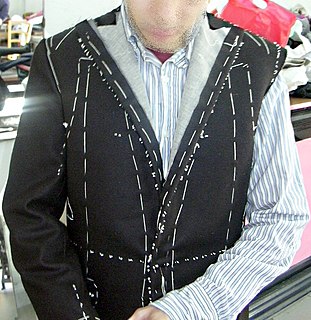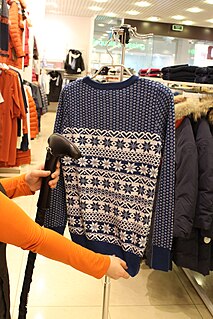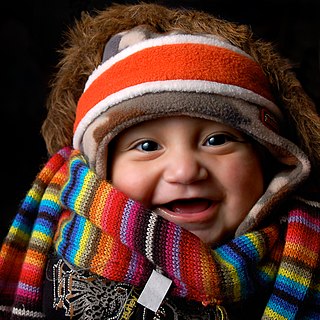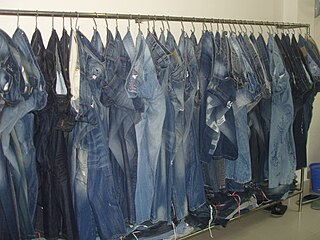 W
WBespoke tailoring is clothing made to an individual buyer's specifications by a tailor.
 W
WIn the Middle Ages or 16th and 17th centuries, a cloth merchant was one who owned or ran a cloth manufacturing or wholesale import or export business. A cloth merchant might additionally own a number of draper's shops. Cloth was extremely expensive and cloth merchants were often very wealthy. A number of Europe's leading banking dynasties such as Medici and Berenberg built their original fortunes as cloth merchants.
 W
WA clothes steamer, also called a garment steamer or simply a steamer, is a device used for quickly removing wrinkles from garments and fabrics with the use of high temperature steam.
 W
WDraper was originally a term for a retailer or wholesaler of cloth that was mainly for clothing. A draper may additionally operate as a cloth merchant or a haberdasher.
 W
WThe drapery hook is a hook designed for hanging drapery. It is often concealed within the drape's header tape The distinctive shape shown in the figure, with a sharp end and a blunt end, was patented by James William McGhee (1882–1968) in the 1920s. Numerous other drapery hooks were patented before and after this common design.
 W
WElectronic textiles or e-textiles are fabrics that enable digital components such as a battery and a light, and electronics to be embedded in them. "Smart textiles" are fabrics that have been developed with new technologies that provide added value to the wearer. Pailes-Friedman of the Pratt Institute states that "what makes smart fabrics revolutionary is that they have the ability to do many things that traditional fabrics cannot, including communicate, transform, conduct energy and even grow".
 W
WHand feel is the property of fabrics related to the touch that express sensory comfort. It is the feel of the fabrics to the skin or hand and suggests sotness and smoothness of the cloth. It is an estimated and subjective property of different fabrics but nowadays, handfeel could be measured and assessed statistically.
 W
WA clothes hanger, coat hanger, or coathanger, is a hanging device in the shape/contour of:Human shoulders designed to facilitate the hanging of a coat, jacket, sweater, shirt, blouse or dress in a manner that prevents wrinkles, with a lower bar for the hanging of trousers or skirts. Clamp for the hanging of trousers, skirts, or kilts. Both types can be combined in a single hanger.
 W
WThe nylon riots were a series of disturbances at American stores created by a nylon stocking shortage.
 W
WPiñatex is a natural leather alternative made from cellulose fibres extracted from pineapple leaves, PLA, and petroleum-based resin. Piñatex was developed by Dr Carmen Hijosa and first presented at the PhD graduate exhibition at the Royal College of Art, London. Piñatex is manufactured and distributed by Dr Hijosa's company Ananas Anam Ltd.
 W
WReady-made garments are mass-produced finished textile products of the clothing industry. They are not custom tailored according to measurements, but rather generalized according to anthropometric studies. They are made from many different fabrics and yarns. Their characteristics depend on the fibers used in their manufacture. Ready-made garments are divided into the following types: outer clothing, which includes workwear and uniforms, leisure wear, and sportswear ; and undergarments, which include jersey goods and lingerie.
 W
WSportswear is an American fashion term originally used to describe separates, but which since the 1930s has come to be applied to day and evening fashions of varying degrees of formality that demonstrate a specific relaxed approach to their design, while remaining appropriate for a wide range of social occasions. The term is not necessarily synonymous with activewear, clothing designed specifically for participants in sporting pursuits. Although sports clothing was available from European haute couture houses and "sporty" garments were increasingly worn as everyday or informal wear, the early American sportswear designers were associated with ready-to-wear manufacturers. While most fashions in America in the early 20th century were directly copied from, or influenced heavily by Paris, American sportswear became a home-grown exception to this rule, and could be described as the American Look. Sportswear was designed to be easy to look after, with accessible fastenings that enabled a modern emancipated woman to dress herself without a maid's assistance.
 W
WA sweatshop is a crowded workplace with very poor, socially unacceptable or illegal working conditions. The work may be difficult, dangerous, climatically challenging or underpaid. Workers in sweatshops may work long hours with low pay, regardless of laws mandating overtime pay or a minimum wage; child labor laws may also be violated. The Fair Labor Association's "2006 Annual Public Report" inspected factories for FLA compliance in 18 countries including Bangladesh, El Salvador, Colombia, Guatemala, Malaysia, Thailand, Tunisia, Turkey, China, India, Vietnam, Honduras, Indonesia, Brazil, Mexico, and the US. The U.S. Department of Labor's "2015 Findings on the Worst Forms of Child Labor" found that "18 countries did not meet the International Labour Organization's recommendation for an adequate number of inspectors."
 W
WA tailor is a person who makes, repairs, or alters clothing professionally, especially suits and men's clothing.
 W
WA textile is a flexible material made by creating an interlocking network of yarns or threads, which are produced by spinning raw fibres into long and twisted lengths. Textiles are then formed by weaving, knitting, crocheting, knotting, tatting, felting, bonding or braiding these yarns together.